Experimental Study on Pore Pressure Variation and Erosion Stability of Sandy Slope Model under Microbially Induced Carbonate Precipitation
Abstract
:1. Introduction
2. Test Materials and Devices
2.1. Test Sand
2.2. Microbial Material
2.3. Testing Apparatus
2.4. Testing Program
3. Experimental Analysis
3.1. Pore Water Pressure
3.2. Fluid Slip Pattern
4. Conclusions
- (1)
- In the M-1 model, after two rounds of reinforcement, a calcium carbonate “film” was formed in the shallow pores of the slope, which reduced the pore pressure change rate during the infiltration of the solution. The model first reacts to produce calcium carbonate in the shallow layer, leading to a solidification of the shallow layer and a gradual decrease in the space between the sand particles. The lower part of the model demonstrates the process of solution infiltration, and the secondary wave crest rises slowly, indicating that the product prevents solution infiltration. The pore pressure of the sensor at the same horizontal depth follows the same change law. However, below 10 cm of the top surface, there are fewer products, with a larger pore pressure change rate and general curing effect.
- (2)
- The S-3 slope, strengthened by three sets of turns, failed after 150 s. The surface blocks of the slope were divided due to the development of cracks. The thickness of the divided blocks was about 3–4 cm. After 109 s of rainfall, the moisture content of the soil increased, with a decrease in the effective stress and anti-sliding force of the soil and the slope surface of the model as a whole. The development of tension cracks induces rainfall convergence and accelerates slope slip. Despite some surface damage, the model maintained good overall integrity. The failure characteristics of the slope are manifested as fractional sliding. Due to the loss of sand, the unloading effect of the model front is obvious, and the deformation is the largest. At the onset of the slip, the suction of the base became zero, and the failure form shows an overall slip with subsequent creep unloading.
- (3)
- After MICP reinforcement, the creep of the M-1 slope model was very slow. The cementation in the sand body led to the discharge of the pore pressure in the slope in a stepped manner, and the basement suction underwent a process of rising and then falling repeatedly. The MICP slope can maintain a certain integrity after failure, prolong the creep time, improve the water stability and anti-erosion capacity of the MICP slope under the action of heavy rainfall and enhance the safety factor of the slope.
Author Contributions
Funding
Institutional Review Board Statement
Informed Consent Statement
Data Availability Statement
Conflicts of Interest
References
- He, J.; Chu, J.; Liu, H.; Gao, Y.; Li, B. Research progress of microbial geotechnical technology. Chin. J. Geotech. Eng. 2016, 38, 643–653. [Google Scholar]
- Dejong, J.T.; Fritzges, M.B.; Nüsslein, K. Microbially induced cementation to control sand response to undrained shear. J. Geotech. Geoenviron. Eng. 2006, 132, 1381–1392. [Google Scholar] [CrossRef]
- Al Qabany, A.; Soga, K. Effect of chemical treatment used in MICP on engineering properties of cemented soils. Géotechnique 2013, 63, 331–339. [Google Scholar] [CrossRef]
- Shao, G.; Chen, H.; Hou, M.; Huang, R.; Liu, P. Variation characteristics of mineralizing reaction along seepage path in bio-grouting-reinforced silt. Chin. J. Geotech. Eng. 2023, 45, 206–212. [Google Scholar]
- Li, X.; Wang, S.; He, B.; Shen, T. Permeability condition of soil suitable for MICP method. Soil Rock Mech. 2019, 40, 2956–2964+2974. [Google Scholar]
- Xu, P.; Wen, Z.; Yang, S.; Liu, Z.; Leng, M.; Peng, J. Experimental study of MICP-solidified sand under different particle sizes. Geol. J. China Univ. 2021, 27, 738–745. [Google Scholar]
- Whiffin, V.S. Microbial CaCO3 Precipitation for the Production of Biocement. Ph.D. Thesis, Murdoch University, Perth, Australia, 2004. [Google Scholar]
- Ma, R.; Guo, H.; Cheng, X.; Liu, J. Experimental study on permeability characteristics of reinforced calcareous sand by microbial mixing. Rock Soil Mech. 2018, 39, 217–223. [Google Scholar]
- Liu, L.; Liu, H.; Stuedlein, A.W.; Evans, T.M.; Xiao, Y. Strength, stiffness, and microstructure characteristics of biocemented calcareous sand. Can. Geotech. J. 2019, 56, 1502–1513. [Google Scholar] [CrossRef]
- Fang, X.; Li, J.; Li, J.; Shen, C. Triaxial compression test and damage constitutive model of microbial solidified coral sand. Rock Soil Mech. 2018, 39, 1–8. (In Chinese) [Google Scholar]
- Feng, K.; Montoya, B.M. Influence of confinement and cementation level on the behavior of microbial-induced calcite precipitated sands under monotonic drained loading. J. Geotech. Geoenviron. Eng. 2016, 142, 04015057. [Google Scholar] [CrossRef]
- Yi, M.; Wang, Y.; Liu, D.; Ankit, G.; Lin, P. Experimental study on coastal soft soil reinforcement based on microbial induced calcium carbonate precipitation technology. J. Shantou Univ. Nat. Sci. Ed. 2020, 35, 47–54. [Google Scholar]
- Tang, Y. Study on Solidification Characteristics and Fracture Mechanism of Microbial Cemented sand Body. Ph.D. Thesis, Tianjin University, Tianjin, China, 2018. [Google Scholar]
- Yin, L.; Tang, C.; Xie, J.; Lv, C.; Jiang, N.; Shi, B. Effects of microbial mineralization on properties of rock and soil materials. Rock Soil Mech. 2019, 40, 2525–2546. (In Chinese) [Google Scholar]
- Hu, M.; Wang, N.; Zhang, P. Experimental study on slope stability and induced landslide under Rainfall condition: A case study of landslide piled breccia soil slope in Jiangjiagou Basin. Chin. J. Geotech. Eng. 2001, 23, 454–457. [Google Scholar]
- Hu, Q.; Liu, T.; Ding, Z.; Bao, W. Effect of rainfall infiltration on stability of slope reinforced by microbial grouting. South. Agric. Mach. 2021, 52, 5–8+14. [Google Scholar]
- Wang, Z.; Wang, J.; Xu, R.; Yao, X.; Li, Y. Pore pressure characteristics of sand caused by water level rise and fall. J. Shandong Univ. Technol. Nat. Sci. Ed. 2022, 36, 77–80. [Google Scholar]
- Zeng, Q. Influence of unsaturated seepage characteristics on slope stability. Water Resour. Sci. Cold Area Eng. 2022, 5, 10–14. [Google Scholar]
- Yuan, X.; Zhou, S. Research on Application of MICP in Building Materials. Yangtze River 2012, 43, 76–79. [Google Scholar]
- Zhou, Y.; Guan, D.; Cheng, L. Application of microbial induced carbonate in soil reinforcement. Geol. J. China Univ. 2021, 27, 697–706. [Google Scholar]
- He, X.; Li, D.; Ren, Y.; Zhang, Z.; Yu, Z. Study on the effect of MICP on the consolidation characteristics of viscous debris flow sediments. Yangtze River 2021, 52, 148–153. [Google Scholar]
- Tang, Z.; Wang, Y.; Duan, X.; Sun, R.; Wang, T. Development and performance evaluation of micro-porous water pressure sensor with high frequency response. Chin. J. Rock Soil Eng. 2021, 43, 1210–1219+1375–1376. [Google Scholar]

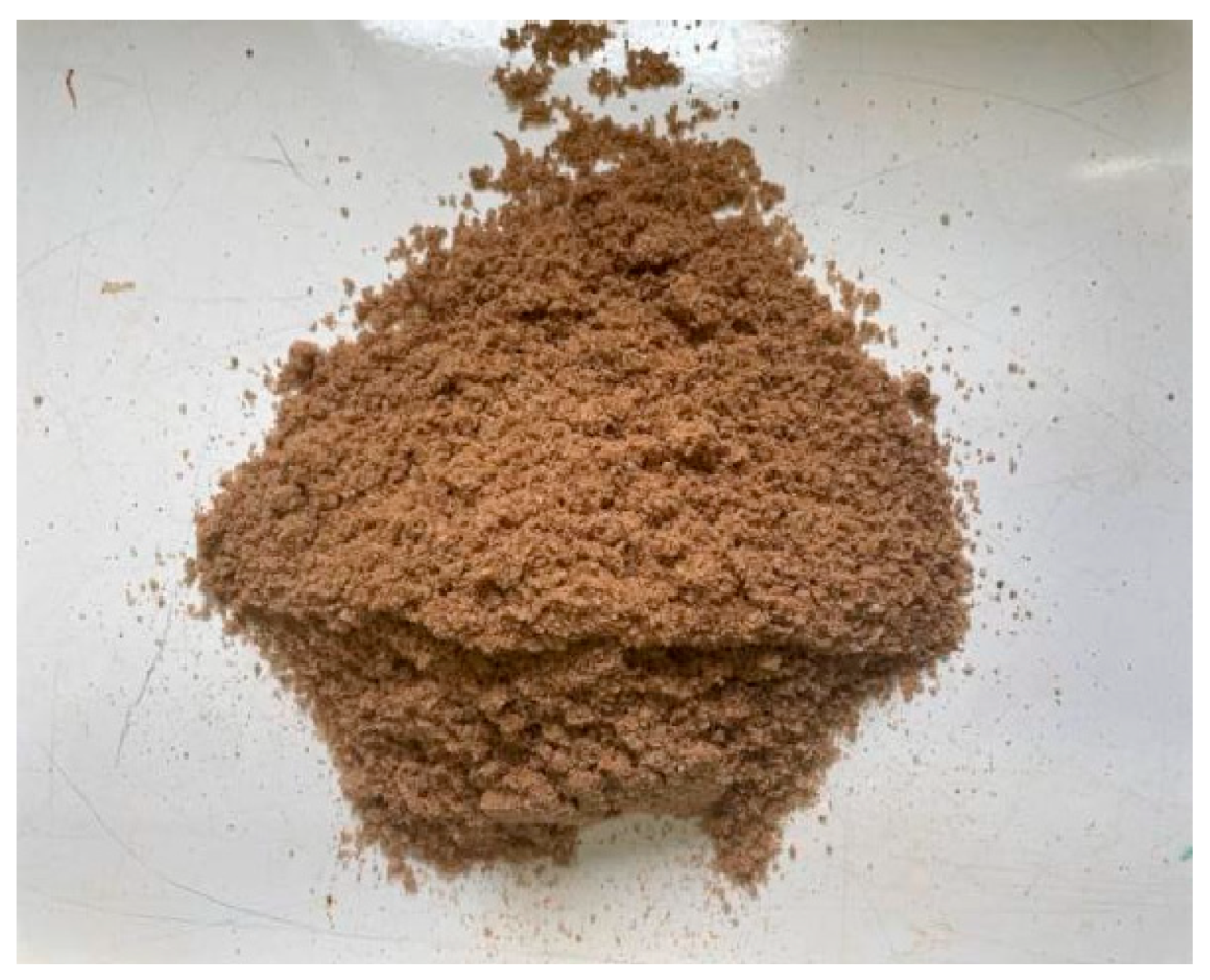
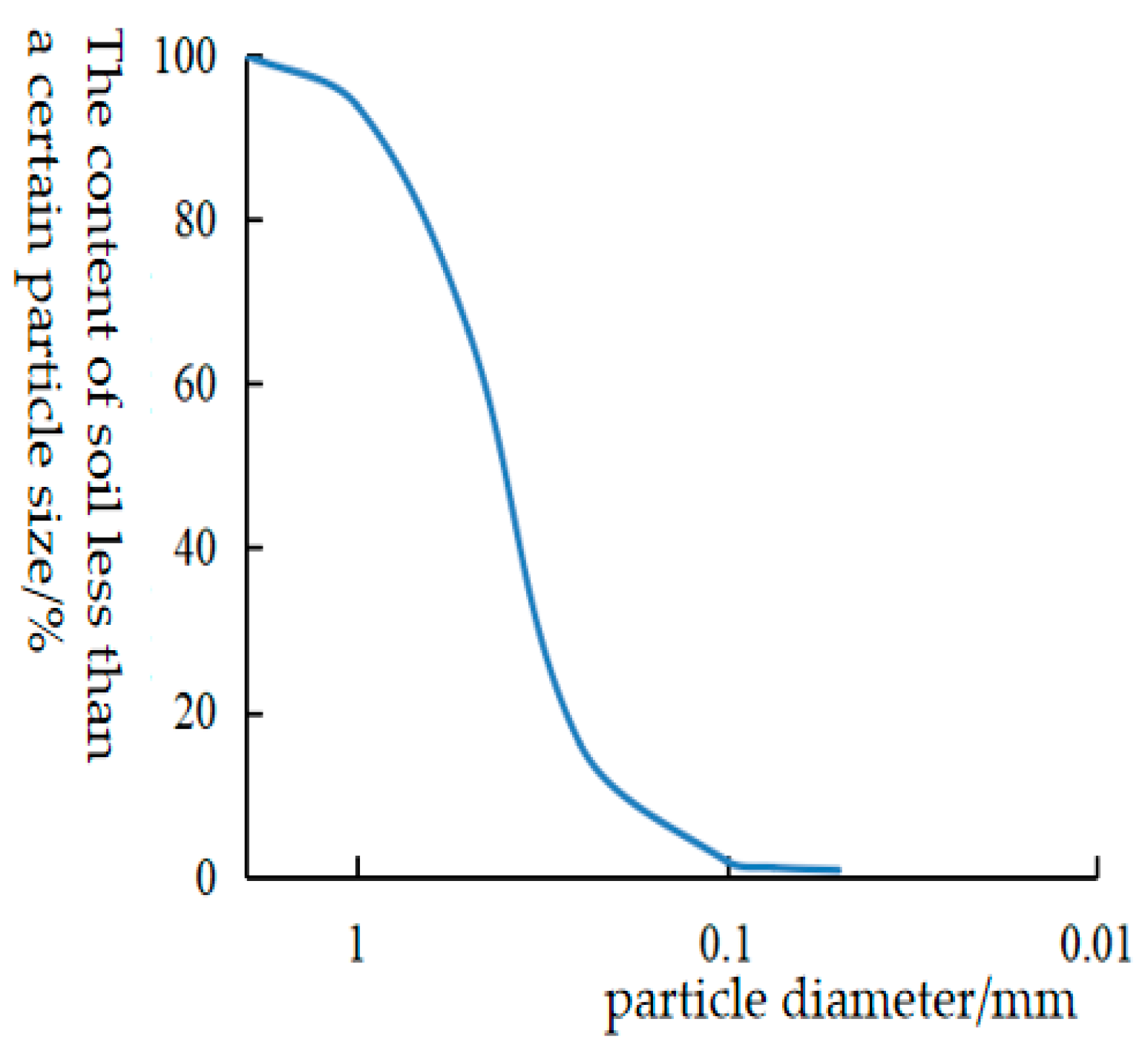


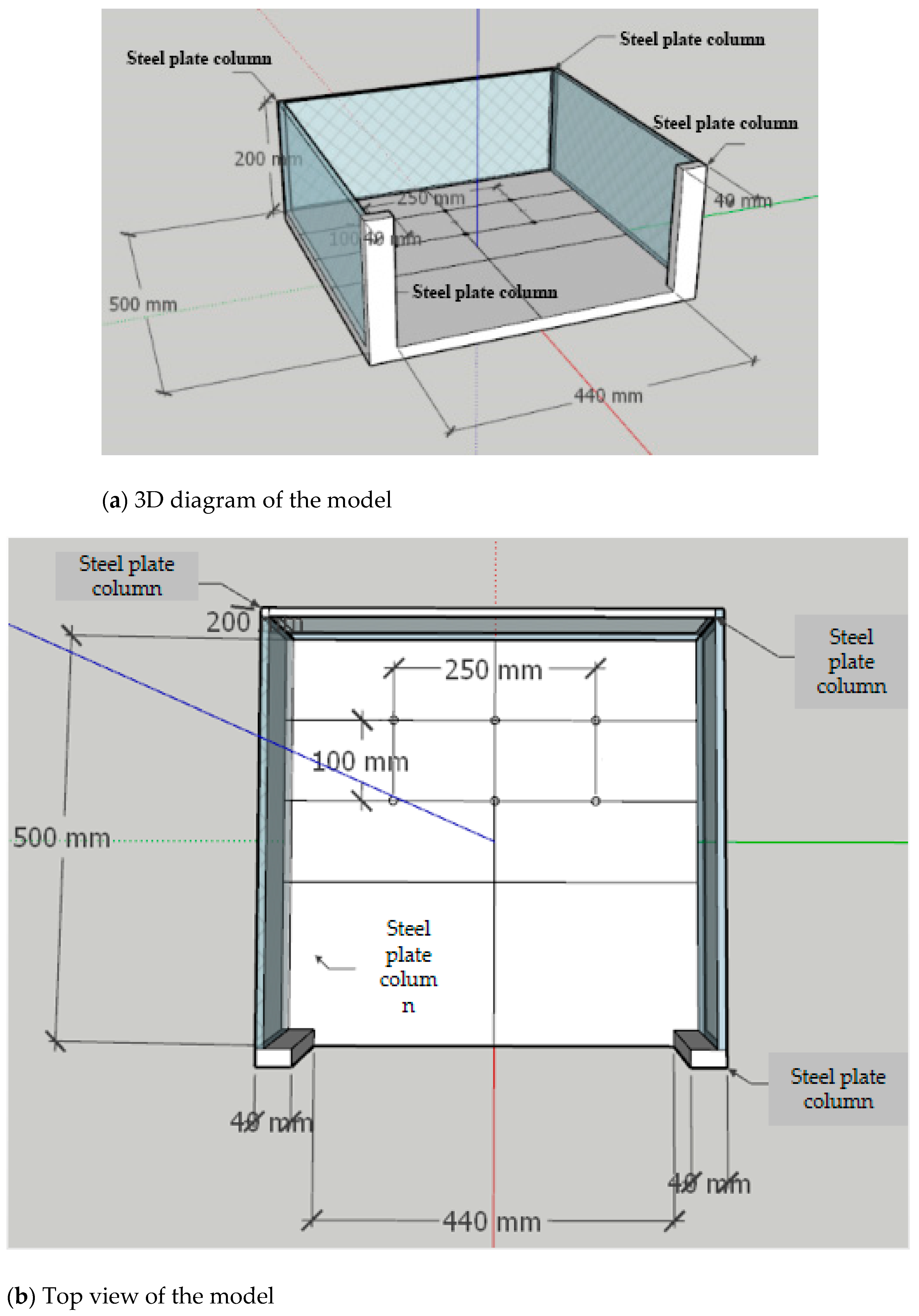

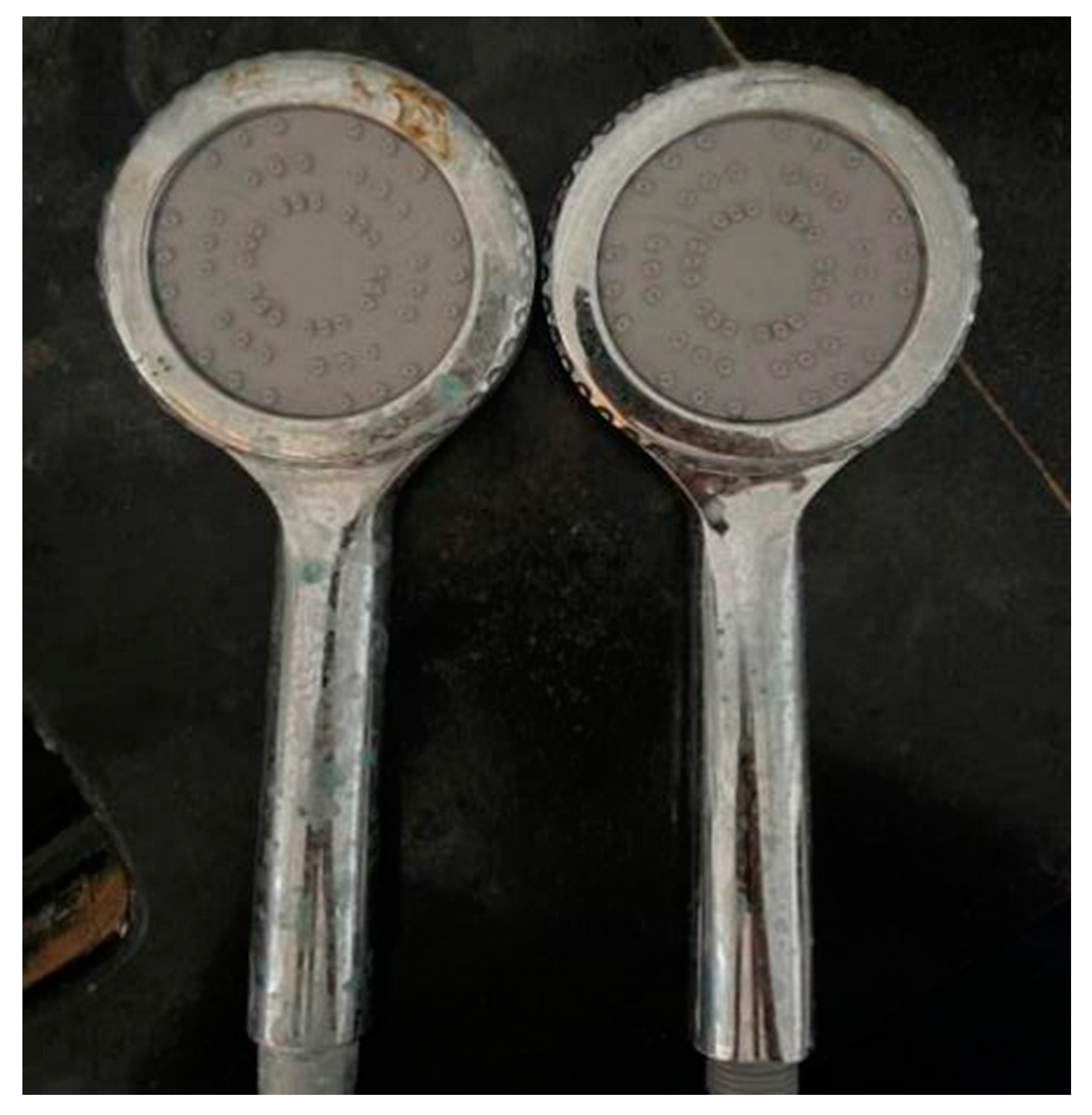


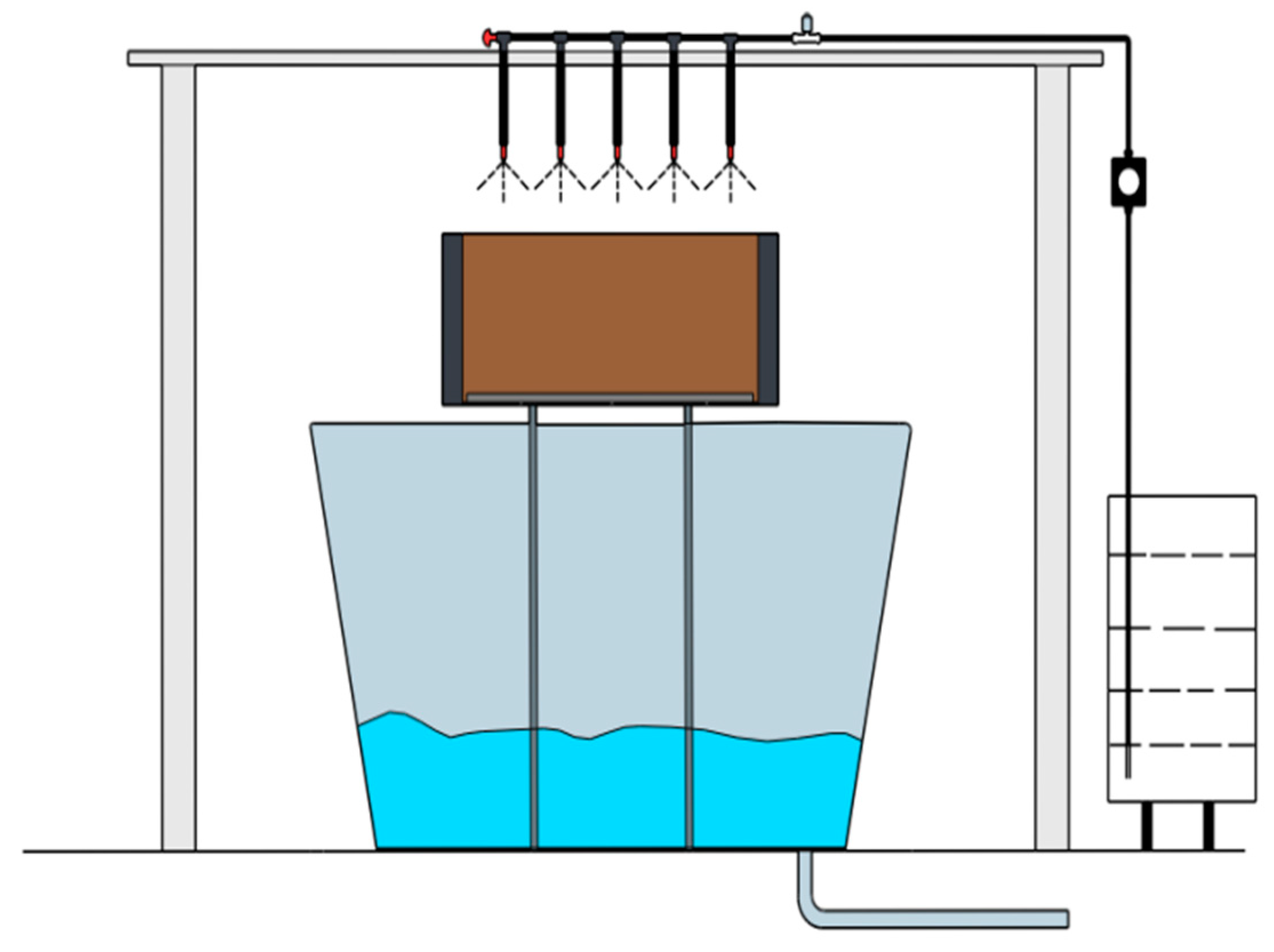
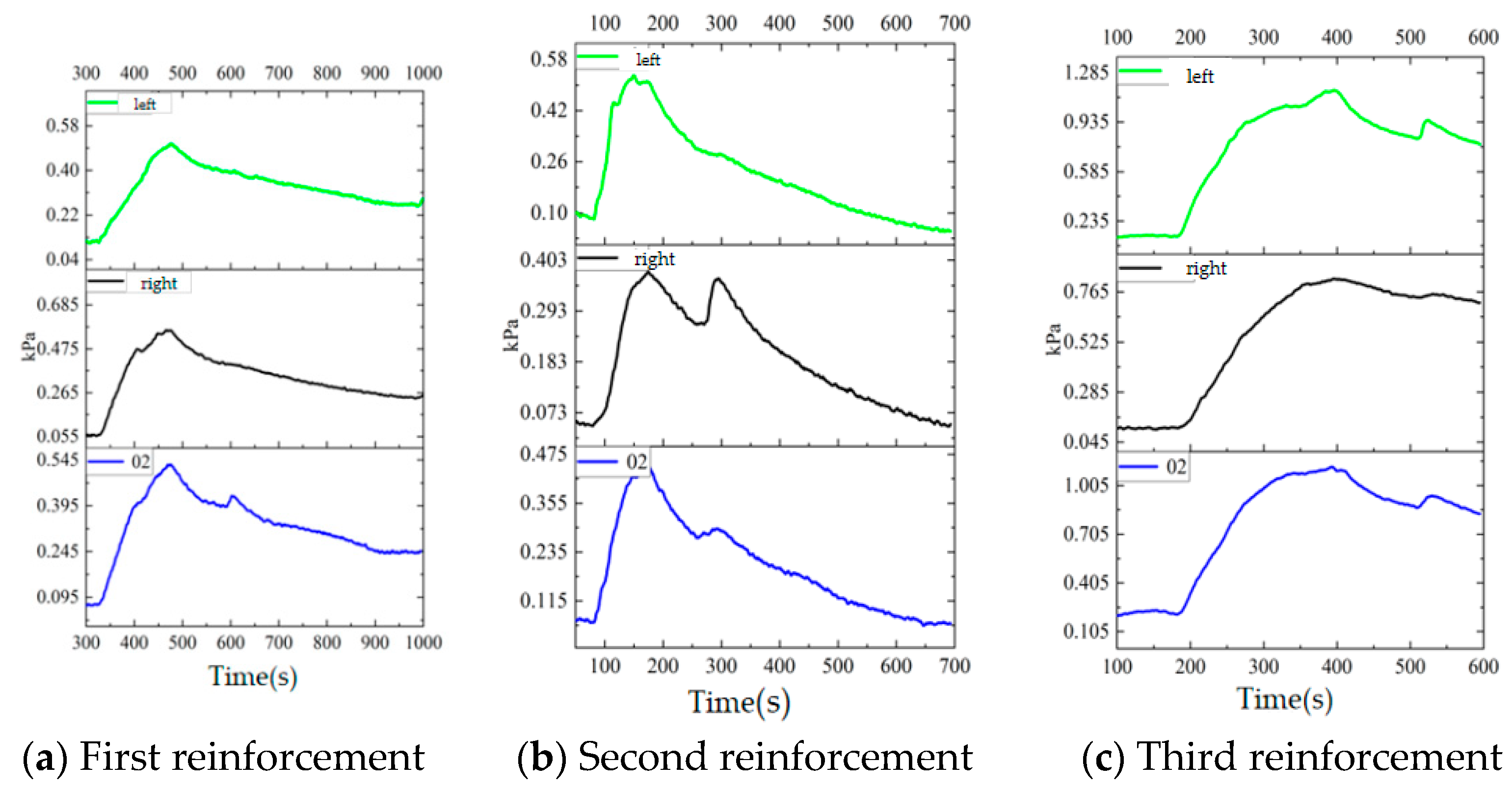
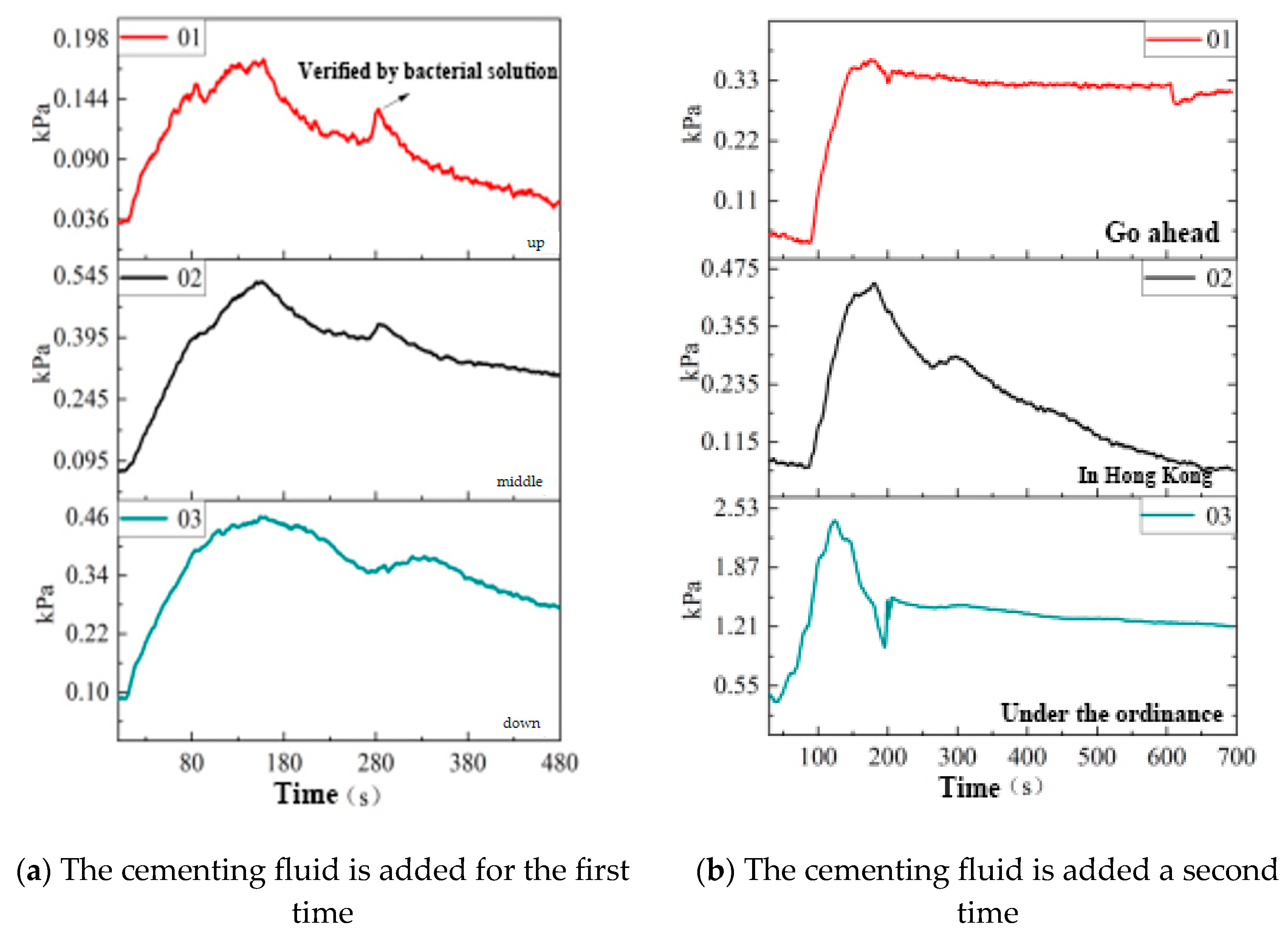
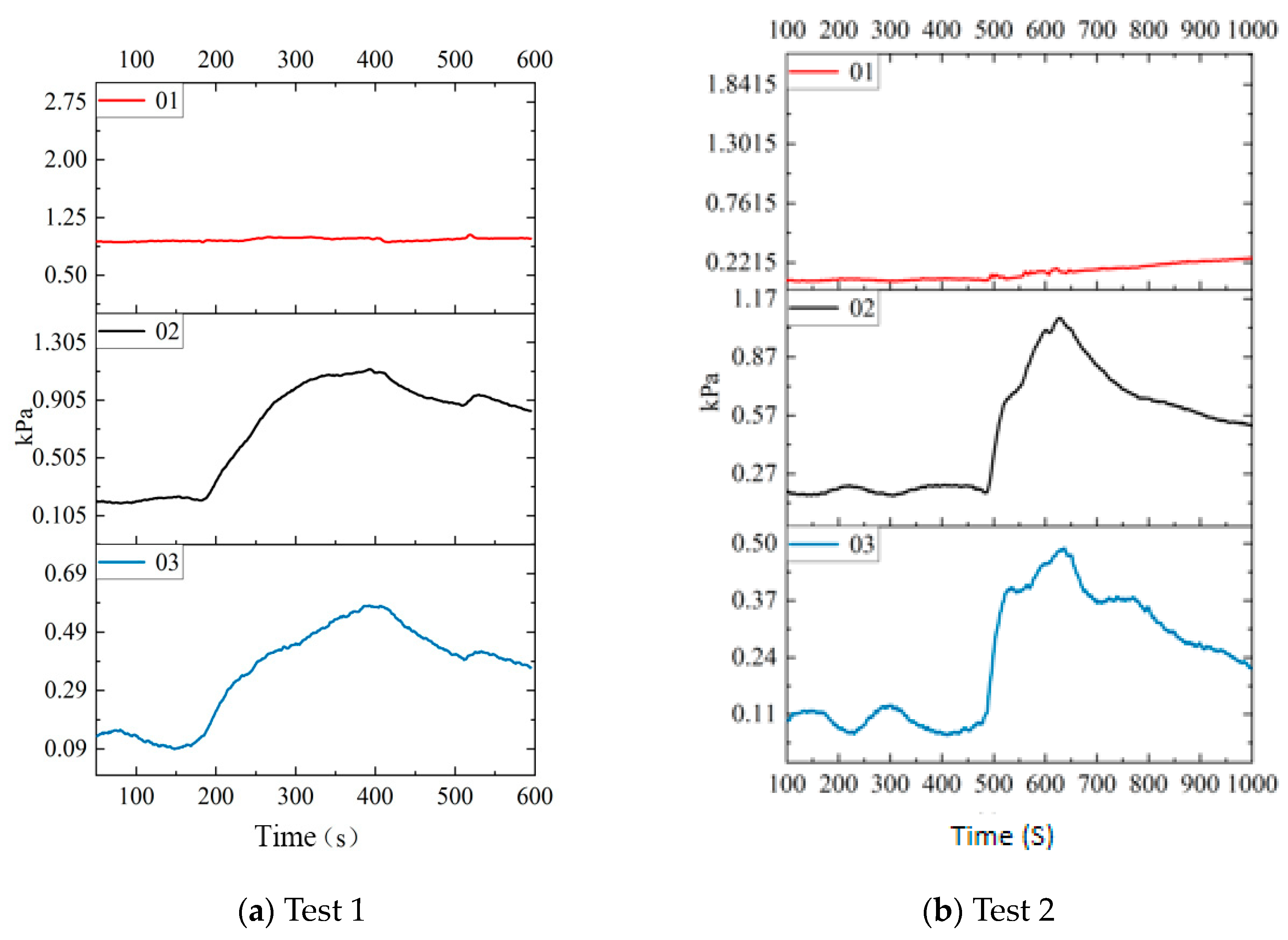
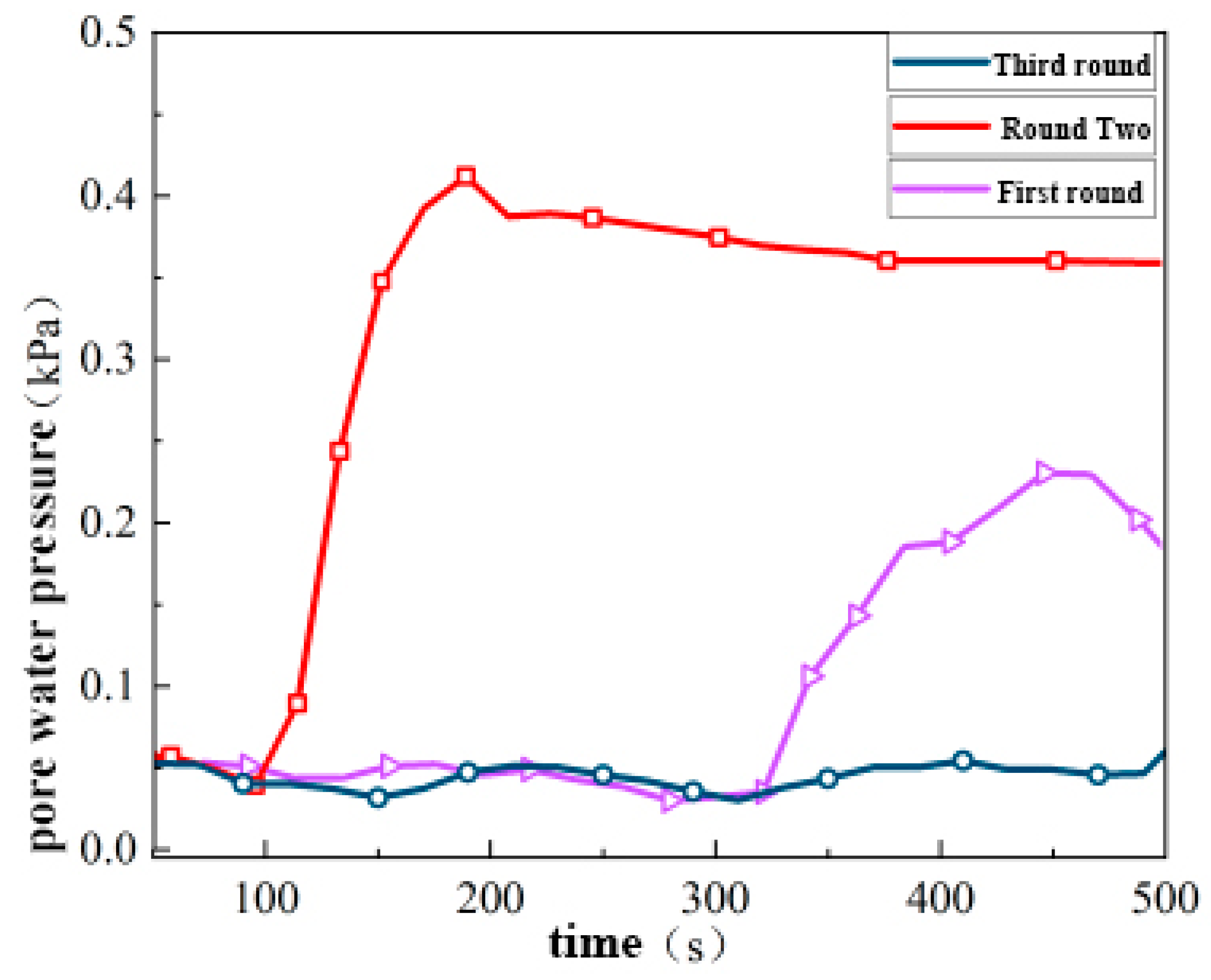
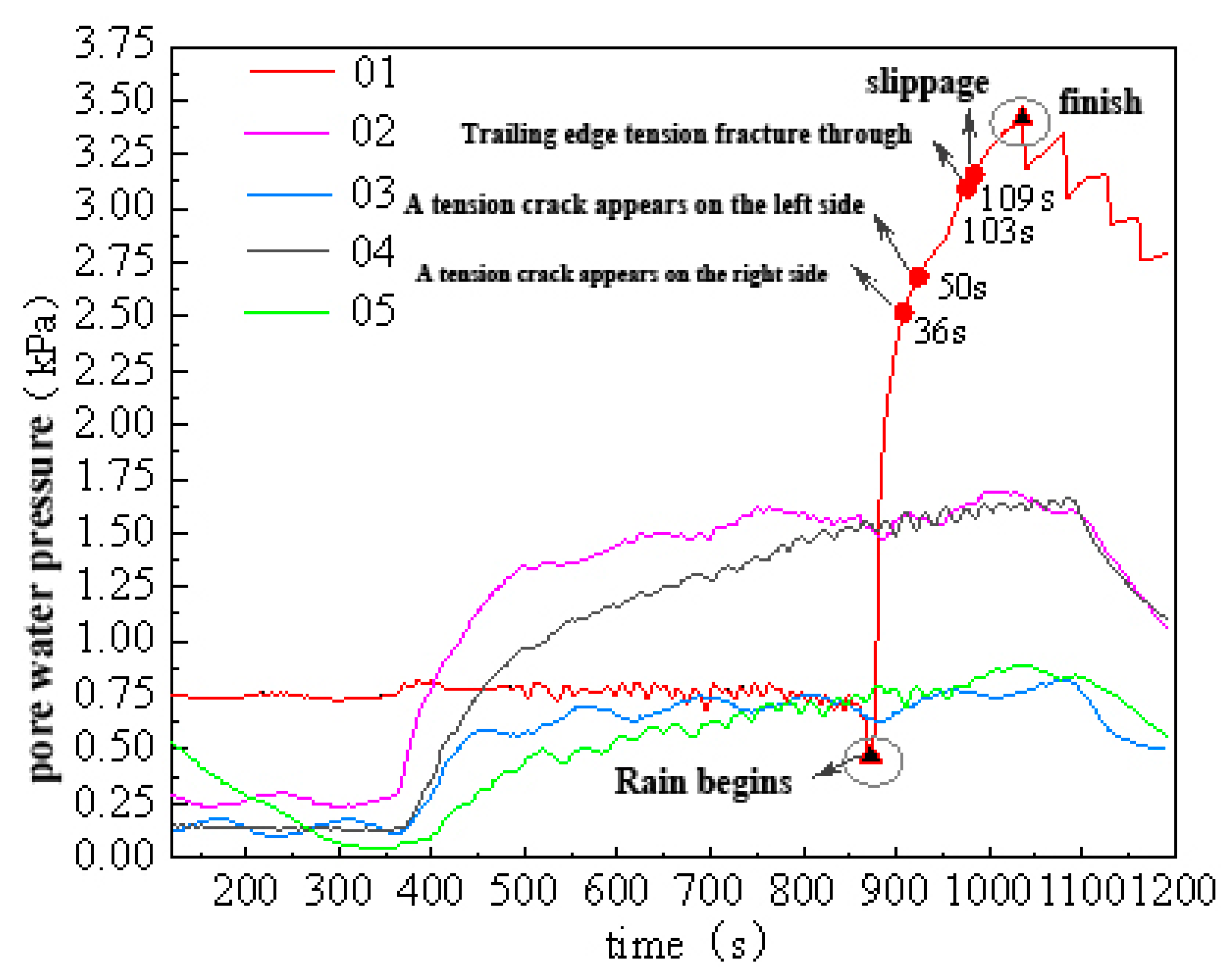
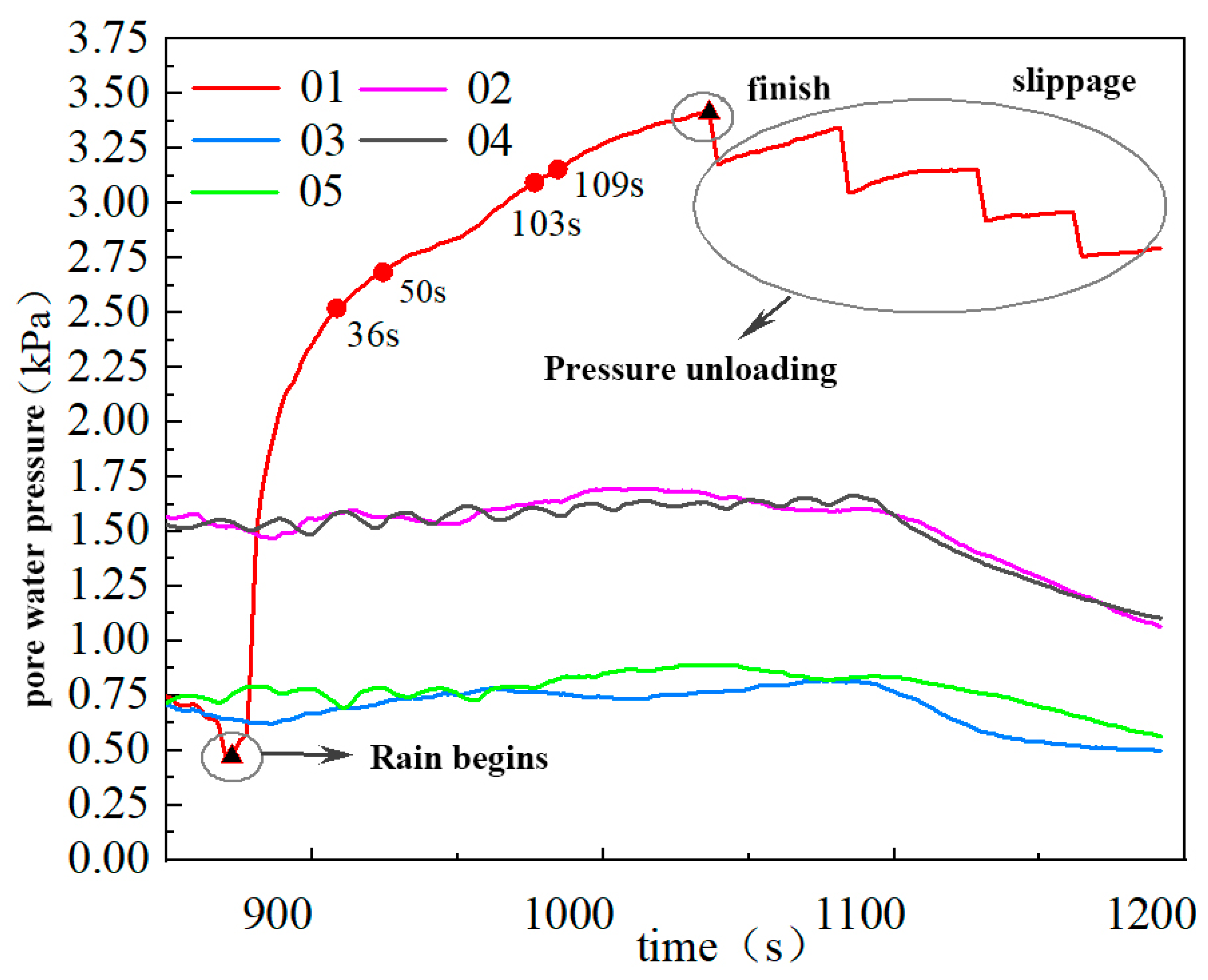
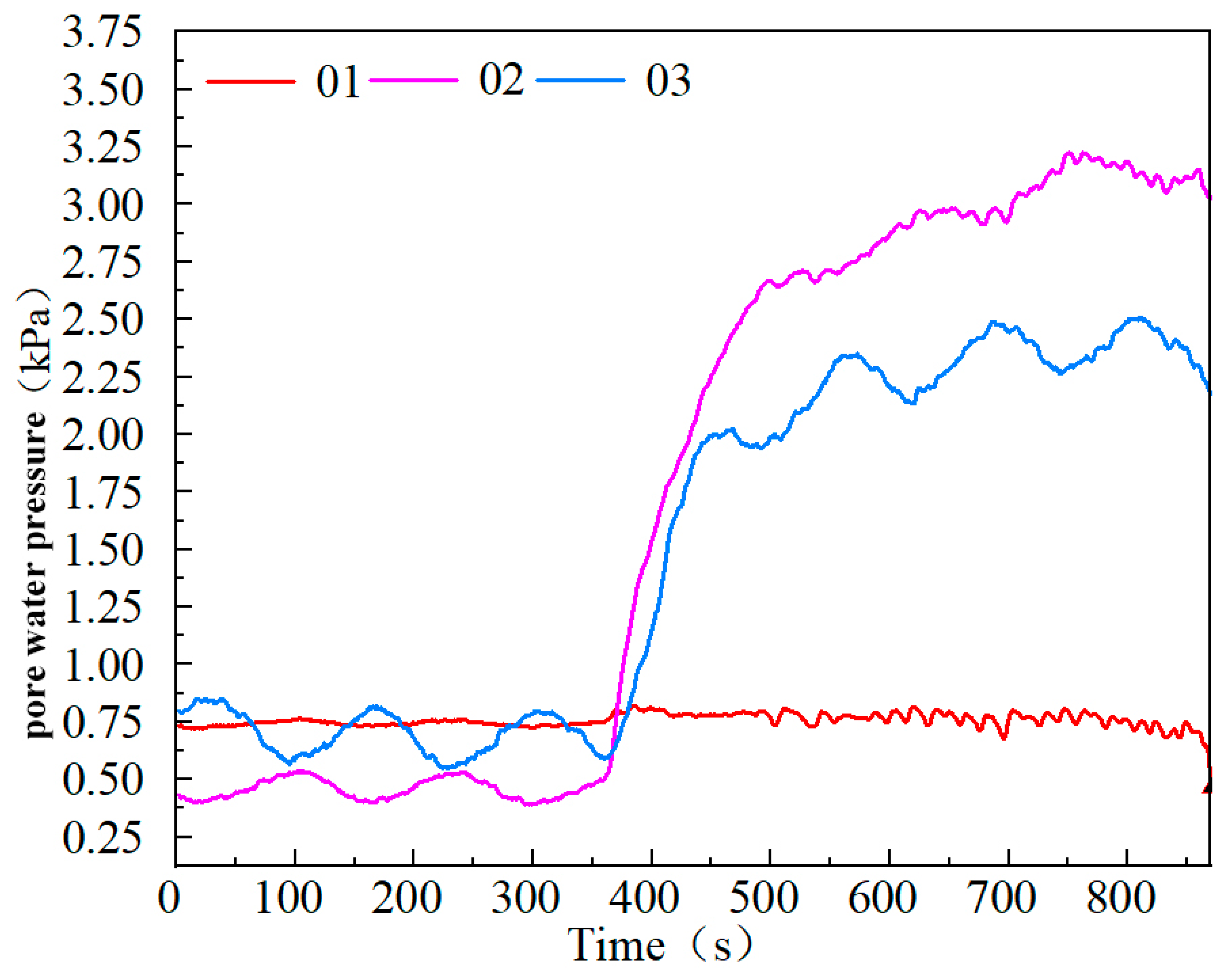
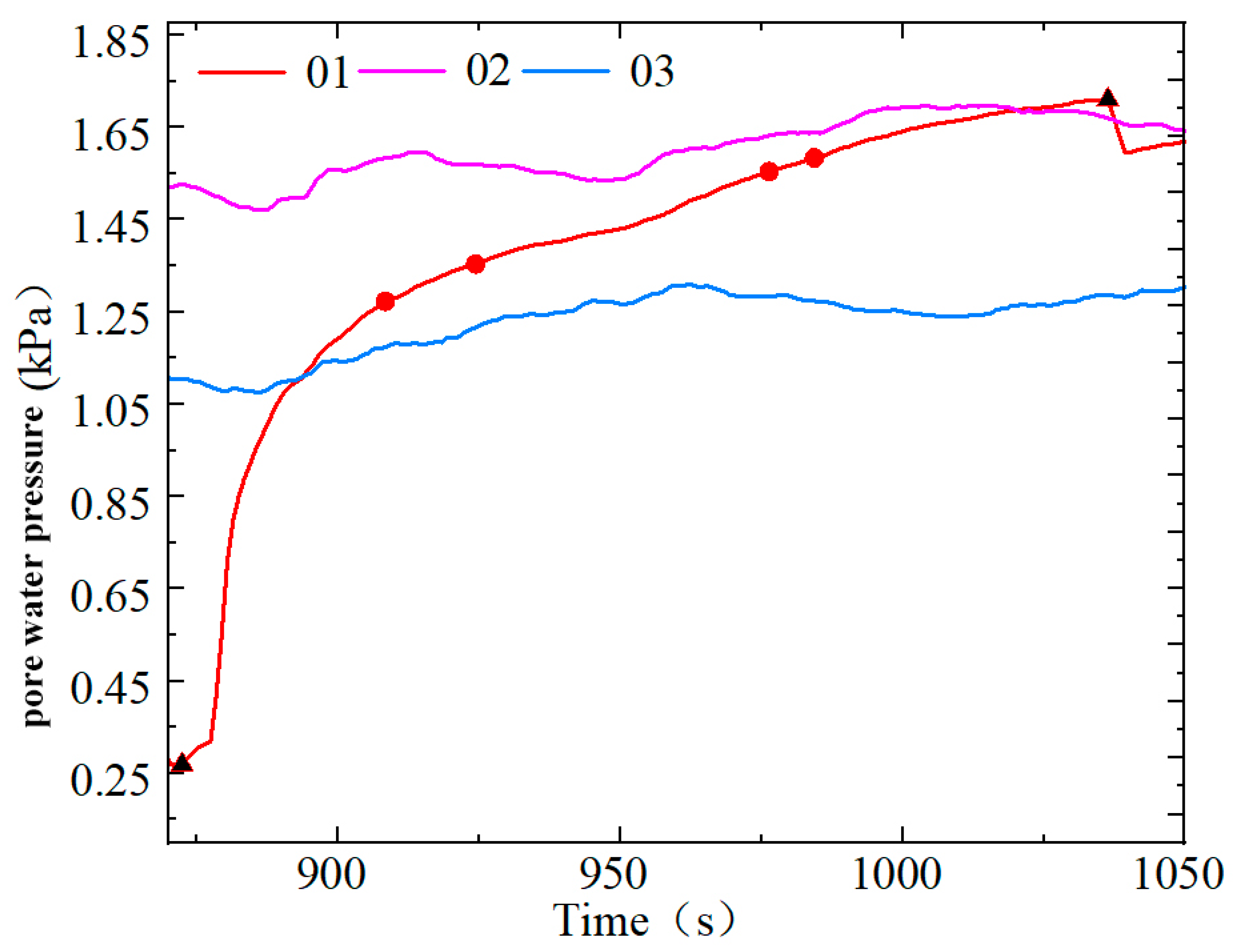
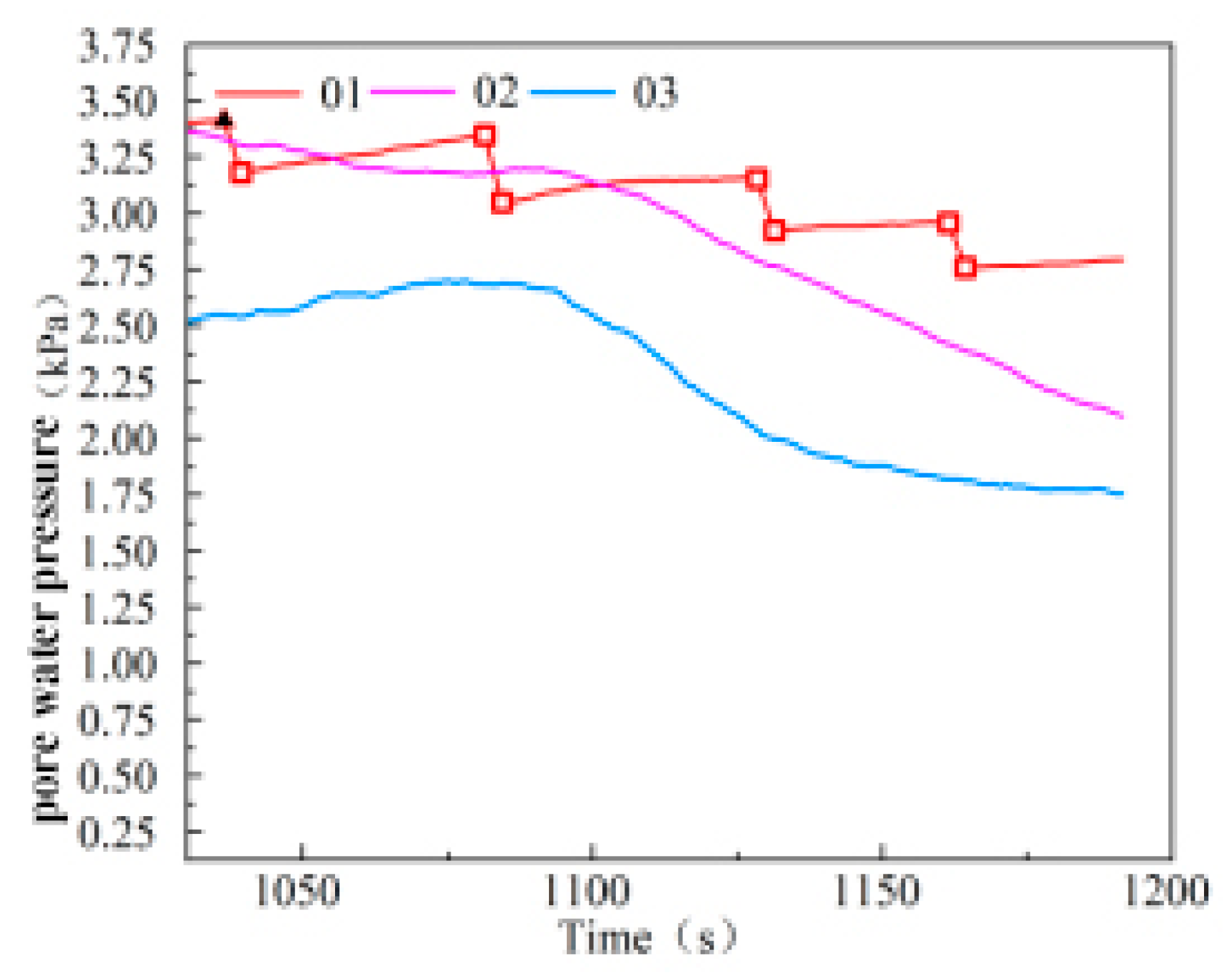
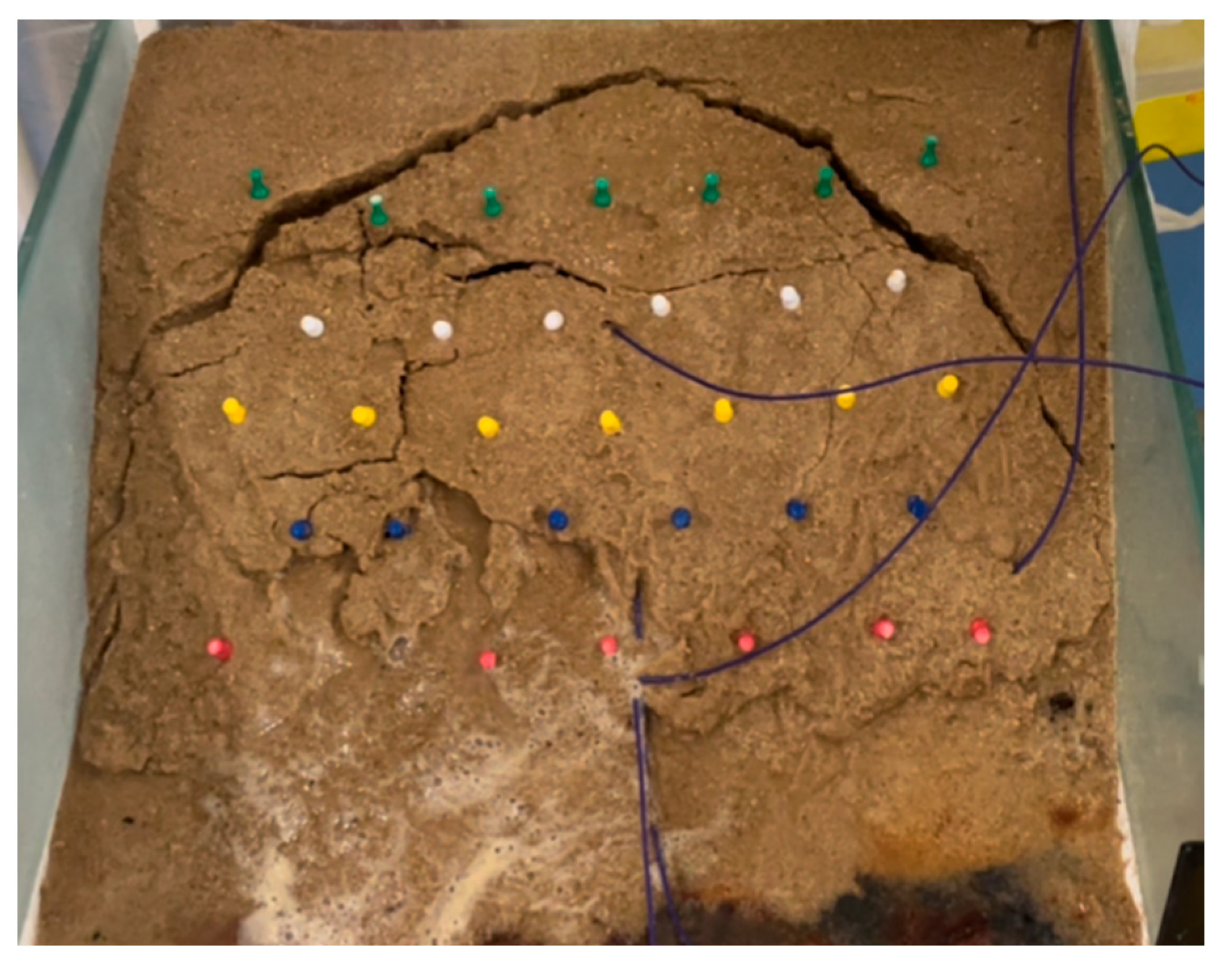

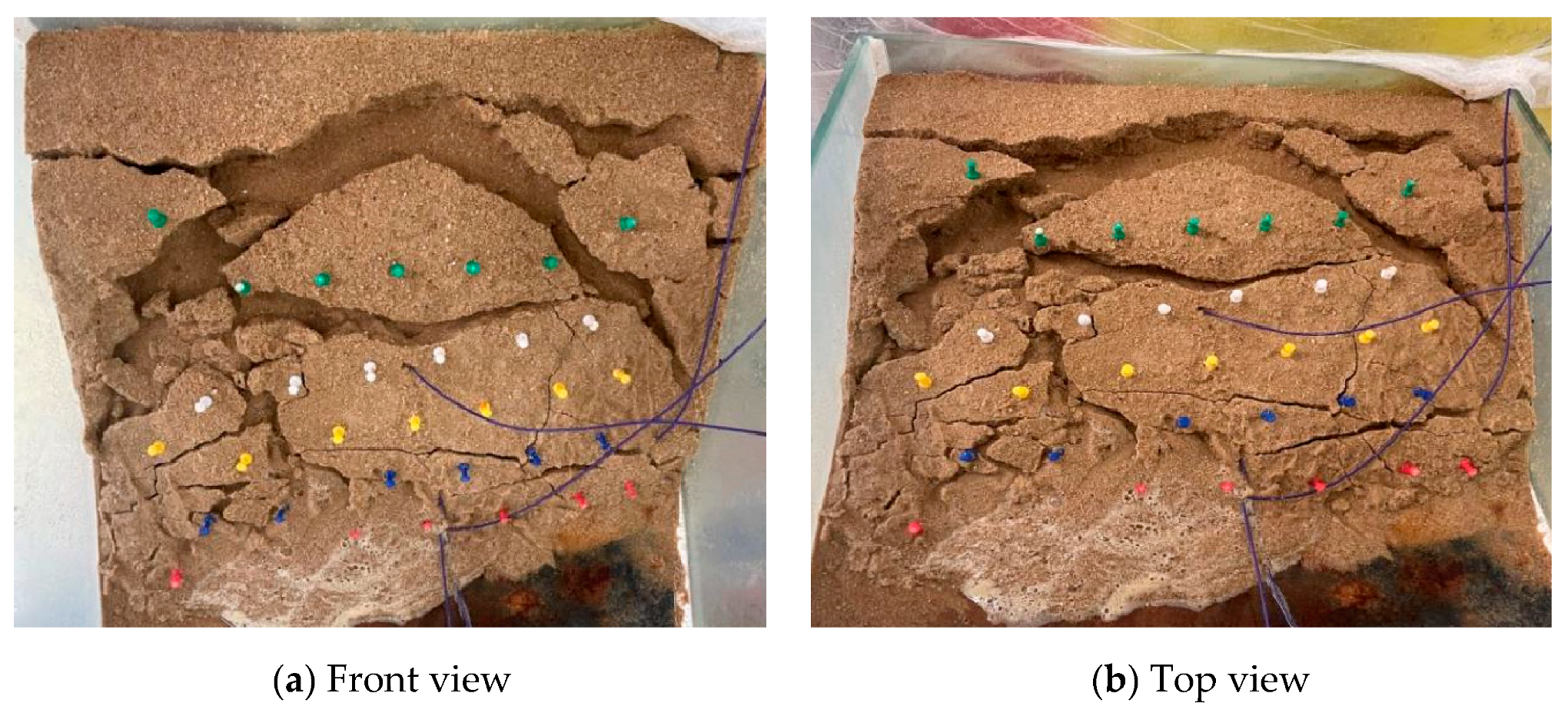
| Dry Density (ρ) | Specific Gravity (Gs) | Moisture Content (%) | Poriness | Cohesion (C) | Internal Friction Angle (φ) |
|---|---|---|---|---|---|
| 1.64 | 2.66 | 15 | 0.29 | 0 | 34 |
| Composition | Distilled Water | Bacteriological Peptone | Glucose | NaCl |
|---|---|---|---|---|
| Content | 1 L | 20 g/L | 20 g/L | 10 g/L |
| Sensor | Calibration Coefficient |
|---|---|
| 1 | 3298.62 kPa/V |
| 2 | 3316.59 kPa/V |
| 3 | 3501.72 kPa/V |
| 4 | 3207.78 kPa/V |
| 5 | 3279.31 kPa/V |
| Slope Base Length | Crest Length | Slope Height | Slope Gradient | Moisture Content | Reduced Scale |
|---|---|---|---|---|---|
| 300 mm | 100 mm | 200 mm | 1:1 | 20% | 1:25 |
| Stationary Liquid | Bacteria Solution | Consolidating Fluid | Time Interval between the Three Solutions |
|---|---|---|---|
| 1000 mL | 1000 mL | 2000 mL | 10 min |
Disclaimer/Publisher’s Note: The statements, opinions and data contained in all publications are solely those of the individual author(s) and contributor(s) and not of MDPI and/or the editor(s). MDPI and/or the editor(s) disclaim responsibility for any injury to people or property resulting from any ideas, methods, instructions or products referred to in the content. |
© 2023 by the authors. Licensee MDPI, Basel, Switzerland. This article is an open access article distributed under the terms and conditions of the Creative Commons Attribution (CC BY) license (https://creativecommons.org/licenses/by/4.0/).
Share and Cite
Huang, M.; Zhang, Y.; Hu, J.; Hei, Y.; Xu, Z.; Su, J. Experimental Study on Pore Pressure Variation and Erosion Stability of Sandy Slope Model under Microbially Induced Carbonate Precipitation. Sustainability 2023, 15, 12650. https://doi.org/10.3390/su151612650
Huang M, Zhang Y, Hu J, Hei Y, Xu Z, Su J. Experimental Study on Pore Pressure Variation and Erosion Stability of Sandy Slope Model under Microbially Induced Carbonate Precipitation. Sustainability. 2023; 15(16):12650. https://doi.org/10.3390/su151612650
Chicago/Turabian StyleHuang, Mingjuan, Youliang Zhang, Jinning Hu, Yunpeng Hei, Zikun Xu, and Jinchen Su. 2023. "Experimental Study on Pore Pressure Variation and Erosion Stability of Sandy Slope Model under Microbially Induced Carbonate Precipitation" Sustainability 15, no. 16: 12650. https://doi.org/10.3390/su151612650





